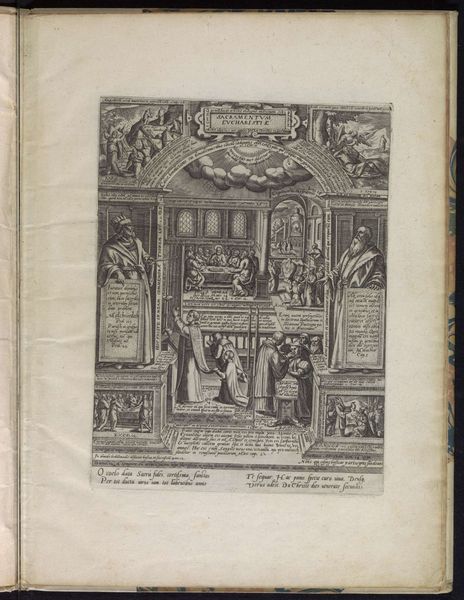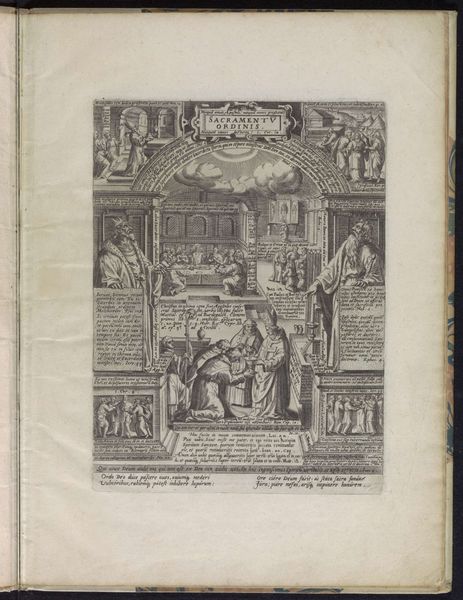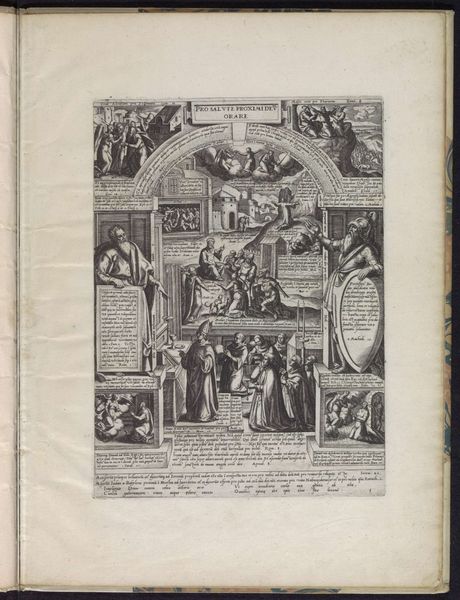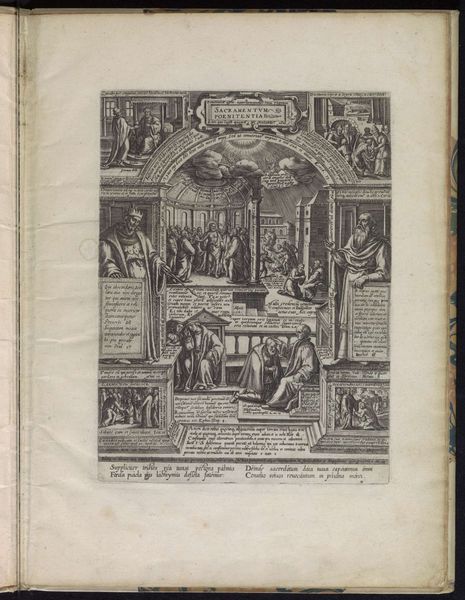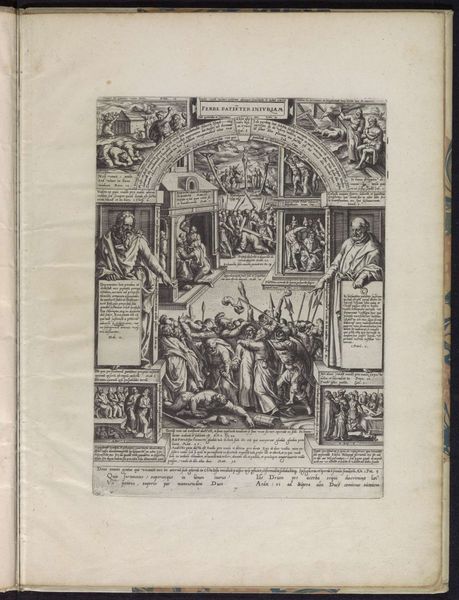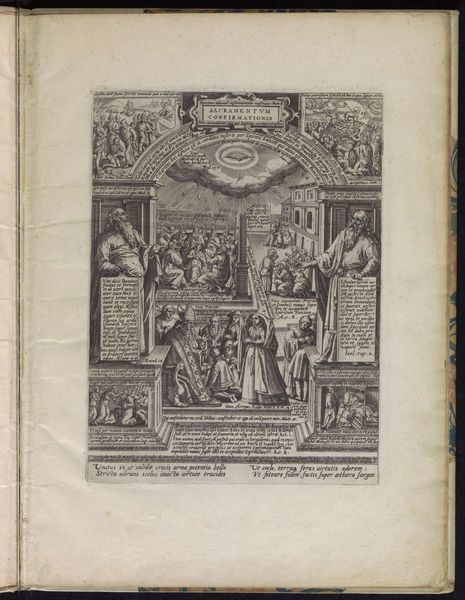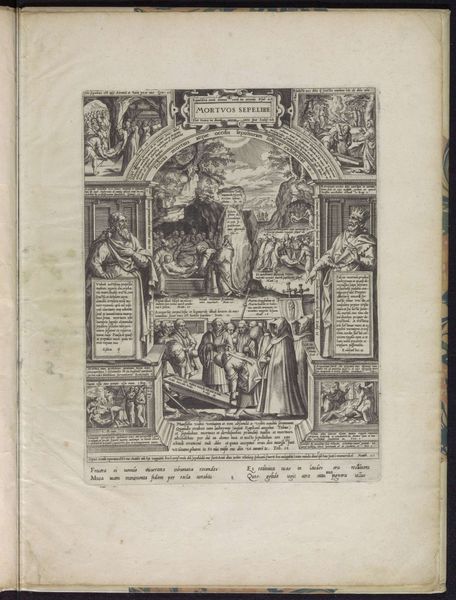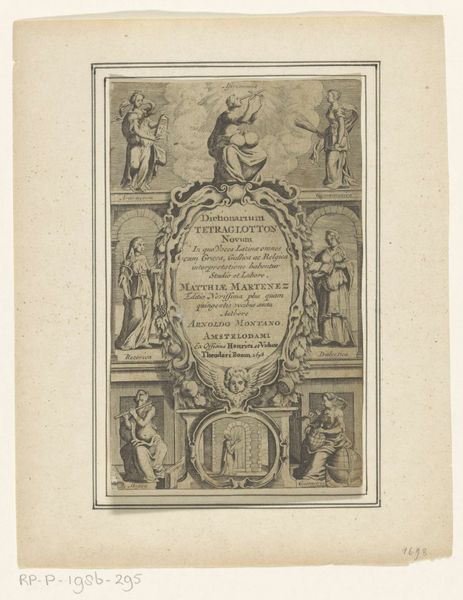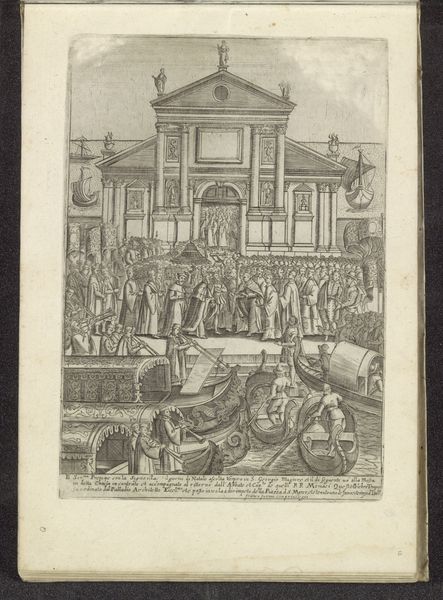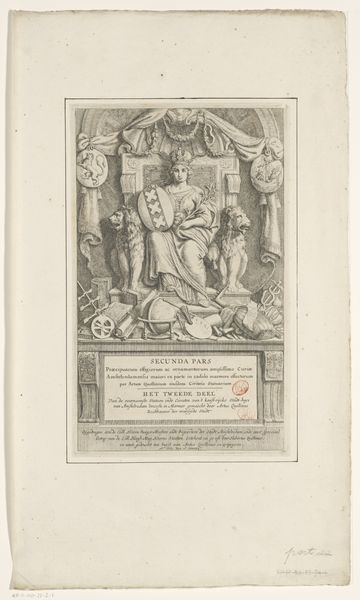
print, engraving
#
narrative-art
# print
#
coloured pencil
#
genre-painting
#
northern-renaissance
#
engraving
Dimensions: height 258 mm, width 191 mm
Copyright: Rijks Museum: Open Domain
Curator: Here we have Philips Galle's "Sacrament van het huwelijk," created in 1576. It's an engraving, currently residing here at the Rijksmuseum. Editor: It's intricate! The fine lines give it a sense of seriousness, almost severity. But, even though it's black and white, I'm drawn in by the way the scenes are framed – almost like looking at a series of little stages. Curator: Precisely! Galle isn't just presenting a simple wedding scene; he's constructing an entire symbolic world. Consider the choice of framing the central image by figures representing law and religion. They impose societal doctrines and spiritual expectations onto the marital ritual. Editor: You’re right. That focus on structure and constraint definitely feels present in the medium itself, engraving. Each line, each mark requires deliberate labor. It reflects how marriage during the Northern Renaissance was not just an individual act, but heavily tied to labor relations and property. The image becomes a means of reinforcing social order. Curator: The context of this being a print also matters. Galle created "Sacrament van het huwelijk" at a time when societal structures around marriage were being reshaped by the Reformation. It speaks to a desire to define and reinforce particular moral viewpoints within the family, using imagery available to an emerging public readership. Consider, as well, who the likely consumer would have been. What norms of gender and family are being perpetuated here? Editor: Interesting! That makes me look closer at how gender roles are portrayed through the bodies and positions of people present at the wedding. How different participants carry out their different stages in performing matrimony, for better or worse. Curator: Yes! We can interpret even the light emanating from above, shining down on the couple, as representing a top-down power structure sanctioning this union and highlighting themes of purity. Editor: It is interesting to consider the materials and how easily reproducible engravings were back then. They facilitated spreading this idealized notion of marriage, mass producing cultural norms with the simple cut of the line on a metal plate. Curator: Examining this piece through its materiality alongside broader social structures allows us to examine ideologies circulating back then and what's passed on today. Editor: Absolutely. It highlights how much of our modern lives has roots that grow far back in time, intertwining in fascinating ways, often reflecting on our means of making.
Comments
No comments
Be the first to comment and join the conversation on the ultimate creative platform.
